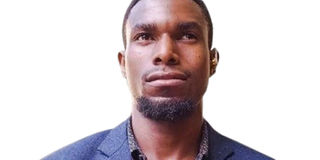Include PWDs in govt relief plans

Godfrey Nanyenya
What you need to know:
- Families with a disabled member may not be able to yield as much social capital as other families.
The Uganda Bureau of Statistics National Household Survey 2009/2010 found that poverty rates in households of persons with disabilities (PWDs) are 30 per cent higher than in households of persons without disabilities.
Uganda joined the rest of the world to commemorate the International Day of persons with disabilities on December 3. Commemoration of this day should be a reminder that PWDs and their caretakers are equally important as their counterparts without disabilities.
Article 11 of the United Nations (UN) convention on the rights of persons with disabilities mandates countries to support caretakers of PWDs in disasters such as pandemics, floods and poverty.
However, the needs of PWDs continue to be ignored by policy makers and planners. Recently, PWDs were left out of the Covid-19 relief fund.
This year, the International Day of People with Disabilities should be used to ensure that they are not discriminated or exploited in any way.
As a physiotherapist who conducts home visits in the households of children with disabilities, especially those in the impoverished slum communities of Kampala, I have observed that poorer people are more likely to become disabled.
This is because disability is significantly associated with low educational attainment, lower employment rates as well as accessibility limitations due to stigma. All these make it difficult to attain the same standard of living as non-disabled counterparts.
In many slum communities I have traversed, disability has profound impact on household relationships and developmental pathways. For instance, in some areas the factors surrounding disability, such as discrimination and environmental barrier issues, rather than impairments have led to stress. Similarly, caregivers in impoverished households are experiencing more parenting stress.
The primary reasons for caregivers of children with disabilities to live in impoverished areas are threefold. They have lower earning capacity, have accommodation needs, and require assistance and care from others.
The reduced capacity to earn, additional expenses incurred and the requirements for care of these households mean that families with a disabled member are likely to have a lower standard of living than households of similar means, without a disabled member.
This is particularly the case in impoverished communities, where formal welfare systems and caring support services and infrastructure are limited.
Social capital in the form of special children’s care stimulus may buffer some of the deleterious effects of disability on the household’s socio-economic status, but this is unlikely to be to the extent necessary to negate the impacts of poverty.
Families with a disabled member may not be able to yield as much social capital as other families, because of their relative lack of caring resources; their members are likely to be focused on the care of their own member, and less able to extend care to non-family members.
As a result, these families may be at risk of social exclusion and so unable to access these networks.
To address this issue, we need to explore the relationship between disability, poverty and parenting stress.
Specifically, we examine whether parenting stress experienced by caregivers in a household with a disabled member is greater when the disabled member is the caregiver, or the child, and how much of these respective relationships is explained by household income.
Understanding the relative role of income and socio-economic status in caregiving can help inform policy and programming.
It will also ensure that the needs of caregivers and children in households affected by disability are reflected in government stimulus interventions especially during global crises like the Covid-19 pandemic.
Godfrey Nanyenya is Disability Inclusion Specialist




